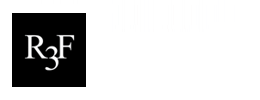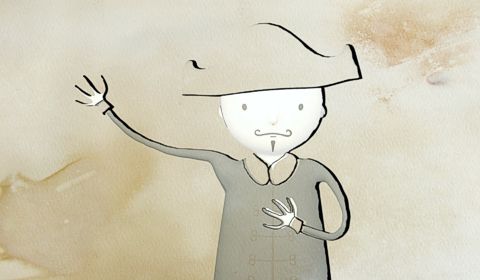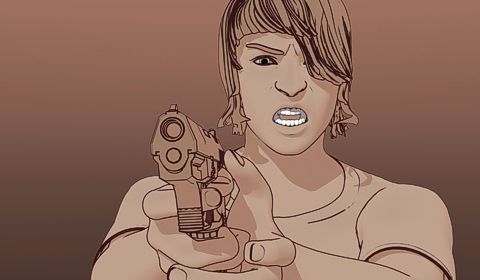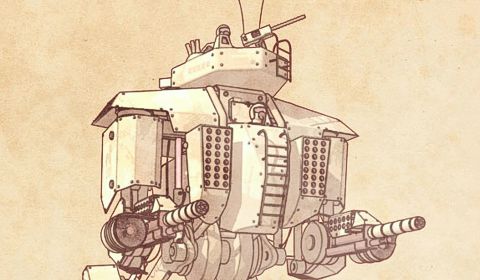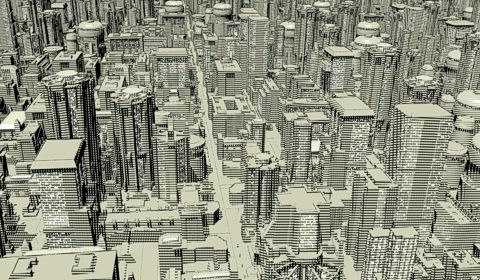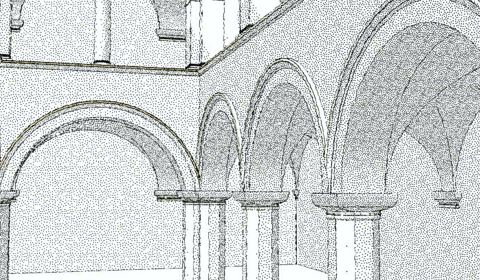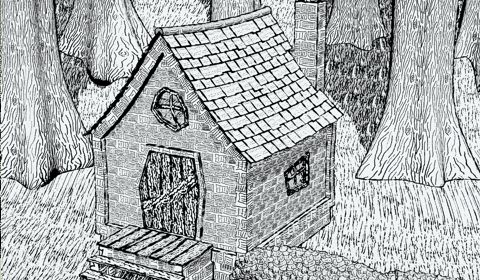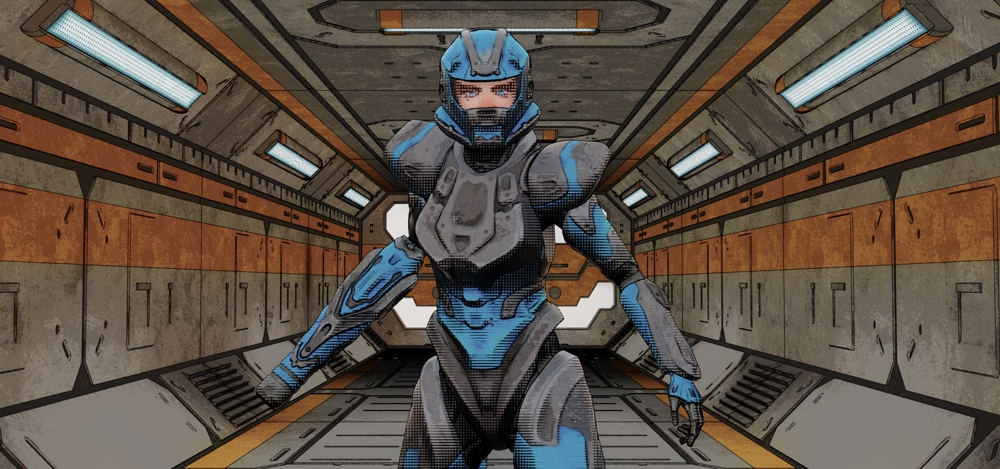
PLUGIN NPR 2 (NON-PHOTOREALISTIC RENDERING)
Foundry introduces the NPR 2 Kit for modo. It helps modo artists easily create a range of expressive, and hand drawn looks when rendering in modo. Nonphotorealistic rendering or ‘NPR’ refers to stylized or expressive 3D rendering that suggests traditional illustration. It is popular in areas from technical illustration, where edges and important features are emphasized at the expense of detailed visual accuracy, to cartoons where simple colors and strong lines are used to convey emotion or appeal to children. The NPR 2 Kit supports a variety of familiar artistic effects in modo including ‘toon’ shading, stippling, halftones and edge rendering. The unique new SketchTone shader can use handsketched hatching examples to reproduce an artist’s original drawing style on any 3D surface. The NPR 2 Kit for modo extends the range of visual styles available to modo users when rendering anything from product visualizations, and technical illustrations to anime and fine art.
|
EDGE INK SHADER: Edge Ink is the next generation of the cel-edge shader you know and love. It adds a softness and inner color for incidence edges, alpha for blending the colors with the underlying color, and the "seeThrough" channel, "See Background", which replaces the surface with the environment behind it. Perhaps most important, an Edge Offset can be textured, as well as the alphas, the background, and of course the colors and edge width. |
TOON SHADER: The Toon Material replaces the smooth shading on your model with bands of solid color, simulating the drawing style used in comic books, cartoons, and particularly Japanese Manga and Anime (comic books and cartoons). The Toon material separates diffuse, specular, and mirror reflection contributions from rendering, quantizes them from smooth gradients into stepped bands. You can adjust how many bands are used for each of these. Diffuse shading is most important, so you can adjust number of bands, the shading levels where the bands appear, and even individually soften or tint them. |
|
GOOCH SHADER: The Gooch reshader also replaces your rendered shading, but seeks to produce shading with an even brightness, where shadowed areas are tinted with a cool blue instead of darkened, and the bright areas are given a warm cast. This keeps details and edge lines visible, and keeps bright areas distinct from a white background. The algorithm is based on a technique used by technical illustrators, and is due to a 1998 paper by Gooch et al., A Non-Photorealistic Lighting Model For Automatic Technical Illustration. |
HALFTONE SHADER: Halftoning is a technique used to reproduce shaded images with only a single ink color. It works by creating a halftone ‘cell’ for each pixel, then partially filling that cell with a color so that from a distance, it will appear to have the correct luminosity. Halftone cells are commonly drawn using circles of different sizes, or lines of different thickness, but many other patterns are also possible. |
|
STIPPLE & DAB SHADER: Stippling is a technique used by illustrators and engravers to simulate smooth shading with only two colors. Thhy painstakingly draw tiny dots that are more-or-less evenly spaced, but have no regular pattern. The Stipple material replaces the shading on your model with dots of varying density. You control the size of dots when you set the number of dots to use in a tile. Dab is a version of the Stipple material that uses an image instead of dots to shade the surface. The effect is designed to work with a black image with transparent background, simulating pen strokes. The individual brushes can be randomly rotated. |
SKETCHTONE SHADER: Sketch tone provides a style-driven capability that leverages your own hand-drawn shading and hatching patterns when re-shading your models. It works by prioritizing the strokes an artist would use to shade a surface. High priority strokes are those drawn even where there is little shading. Lower priority strokes are filled in later, as the shading gets darker. This technique reproduces not only the hand-drawn quality of the strokes used, but also the artist’s own interpretation of the surface. Each material can be given a different texture, from bricks to bark, which share stroke characteristics but also represent a unique surface structure. |
What's new in version 2
- XTOON Shader
XToon is a custom material for Toon shading that gives new flexibility and control over shading. Traditional Toon or Cel Shading reduces smooth shading to a series of sharp bands using a one dimensional ‘map’ of color steps from full shadow to full brightness. XToon would be used to simulate fog or depth of field effects, or to reduce visual detail in areas of less significance. Because MODO can drive this detail with an external texture, the possibilities are endless. - SURFACE FLOW
Surface Flow is a new way to change both NPR screen tiling parameters based on surface distance and angle, and the position of one or more texture locators. When using screen coordinates instead of UVs, this helps increase the illusion that the texture is attached to 3D objects in the scene, for a more natural, hand-drawn shading. For animation, it offers an additional way to eliminate the look of an object sliding under a fixed texture.
- GRADIENT CHANNELS
Gradient channels in the Toon Material lets you accurately control the level and band positions for specular highlights and mirror reflections.
- MORE POWERFUL RE-SHADING
Most of the NPR Shaders now let you mix indirect illumination into the shading amount. Doing this gives you fine control of your lighting, and really takes advantage of MODO’s powerful global illumination rendering. Your shading can now be rendered with Crayon or Scratch mode. Crayon mode uses the surface diffuse color in place of the shader’s ink color. Scratch mode used the final rendered color of the surface as the ink color. Lastly, the simple Specular Drawing toggle has been replaced with a mixing level to give you better control specular highlights, and a companion Reflection Amount control lets you mix in your scene reflections.
What's included in the NPR 2 Kit
- 8 NPR Shaders
- Sample backgrounds that are ideal for completing the hand-drawn effect including napkins, chalkboard, crumpled and lined paper and a page flip sequence
- 18 Dab brushes
- 56 sketch maps plus 6 XToon maps
- 50 presets
- 9 ready-to-render NPR scenes
- Tiling sketch map paint scene for making your own sketch maps
- XToon generator scene for making your own XToon maps
- Video tutorial that guides you through the creation of your own Sketch Map using MODO and the included Sketch Map/Tiling Texture painting scene.
